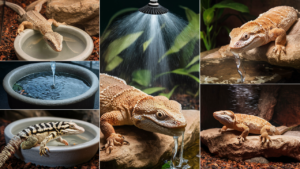Setting up a saltwater aquarium can be a rewarding venture for both novice and experienced aquarists. This article delves into the essential aspects of creating a thriving marine habitat, focusing on equipment, maintaining coral health, ensuring fish compatibility, and best practices for aquarium maintenance.
Setting Up a Saltwater Aquarium
Setting up a saltwater aquarium begins with selecting an appropriate tank size that fits your space and budget. A larger tank offers stability but requires more resources. Next, a reliable filtration system—including a protein skimmer—is vital for maintaining water quality. Using synthetic salt mixes ensures the correct salinity and mineral content. Proper lighting is crucial for photosynthetic corals, while substrate such as crushed coral or fine sand supports beneficial bacteria. Live rock provides hiding places for fish and a natural filtration source. Don’t forget to cycle the aquarium for several weeks, allowing beneficial bacteria to establish before adding marine life.
Essential Equipment for Saltwater Tanks
In a saltwater aquarium, essential equipment includes a high-quality filter for removing debris and maintaining water clarity, a heater for stabilizing temperature, and a protein skimmer to eliminate organic waste.
The importance of filtration cannot be understated; mechanical, chemical, and biological filtration systems all work together to create a healthy environment. Heaters ensure temperature consistency, while protein skimmers aid in nutrient control, reducing algae growth.
Lighting is crucial, particularly for coral growth, with options ranging from fluorescent to LED systems designed to mimic natural sunlight. Different corals require varying intensities and spectrums of light, so selecting the right light is essential.
Water quality testing equipment, such as pH meters, ammonia testers, and salinity refractometers, plays a vital role in monitoring tank conditions. Maintaining stable parameters contributes to overall fish and coral health, making consistent testing critical.
Investing in high-quality equipment improves tank stability, resulting in a thriving ecosystem. Regular maintenance of these devices ensures longevity and optimal operation, safeguarding your investment in marine life.
Maintaining Coral Health
Maintaining coral health is crucial for the vibrancy of your saltwater aquarium. Key water parameters include salinity, ideally between 1.020-1.025, pH levels of 8.1-8.4, and nutrient levels, particularly nitrates and phosphates, which should be kept in check to prevent algae overgrowth.
For beginners, soft corals such as zoanthids and leather corals are suitable; they require less intense lighting and fewer nutrients. Advanced enthusiasts may opt for stony corals like Acropora, which demand more attention to light intensity and water quality.
Managing algae is vital; utilize herbivorous fish and snails to naturally keep it at bay. Regularly prune overgrown algae and consider introducing a refugium or a phosphate reactor to enhance water quality and promote coral growth, ensuring a thriving reef ecosystem.
Ensuring Fish Compatibility
When selecting fish for a saltwater aquarium, consider aggression levels, sizes, and dietary requirements. Choose species that coexist peacefully within a biotope, ensuring their environmental needs align. Research schooling habits and territorial behaviors to promote harmony. Gradual introductions are vital; monitor fish closely for unusual behavior or stress after each addition.
Ongoing Maintenance Tips
Regular maintenance is vital for saltwater aquarium health. Schedule bi-weekly water changes to ensure stable salinity and nutrient levels, removing up to 20% of the water. Always use dechlorinated water.
For filter maintenance, rinse or replace filter media monthly, removing debris while avoiding beneficial bacteria loss. Check pumps and skimmers weekly to prevent clogs that can lead to equipment failure.
Routine testing for salinity, pH, ammonia, nitrite, and nitrate levels should occur every two weeks. Use reliable kits and keep detailed records. Promptly address deviations to prevent stress on marine life.
Common issues include algae blooms. Reduce light exposure, adjust feeding, and increase water circulation. For fish diseases, observe behavior and consider quarantine to prevent outbreaks. Regularly monitor fish health to catch problems early.
Equipment failures can disrupt tank balance. Keep a backup power source, and ensure water level is adequate for pumps. Familiarize yourself with troubleshooting steps for heaters, skimmers, and other critical components. Implementing these tips will foster a thriving, vibrant aquatic environment.
Conclusions
Creating and maintaining a saltwater aquarium requires careful planning and dedication. By focusing on proper setup, essential equipment, coral health, and fish compatibility, hobbyists can enjoy a stunning underwater ecosystem. With regular maintenance, your saltwater tank will flourish, providing endless beauty and enjoyment.



